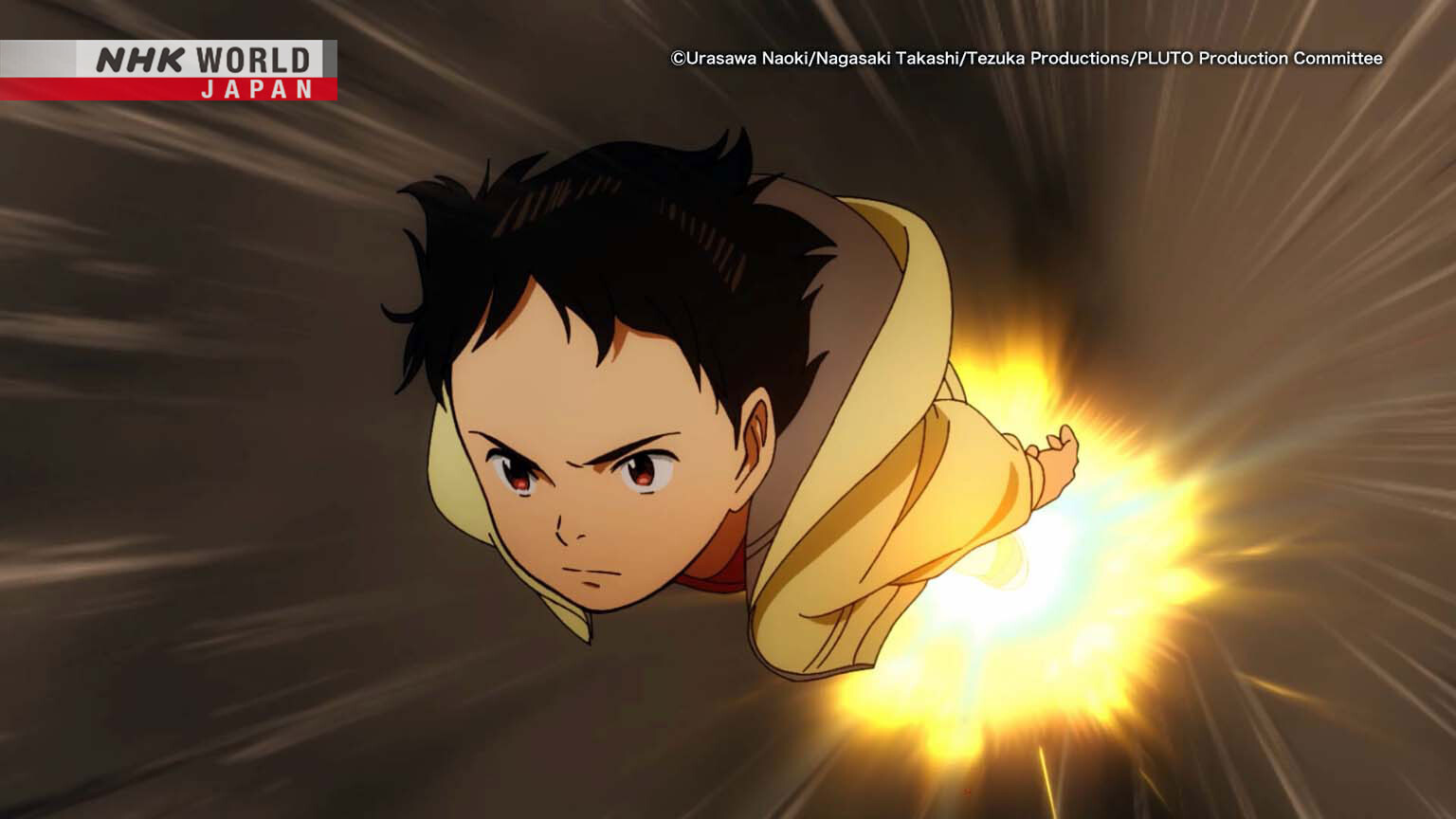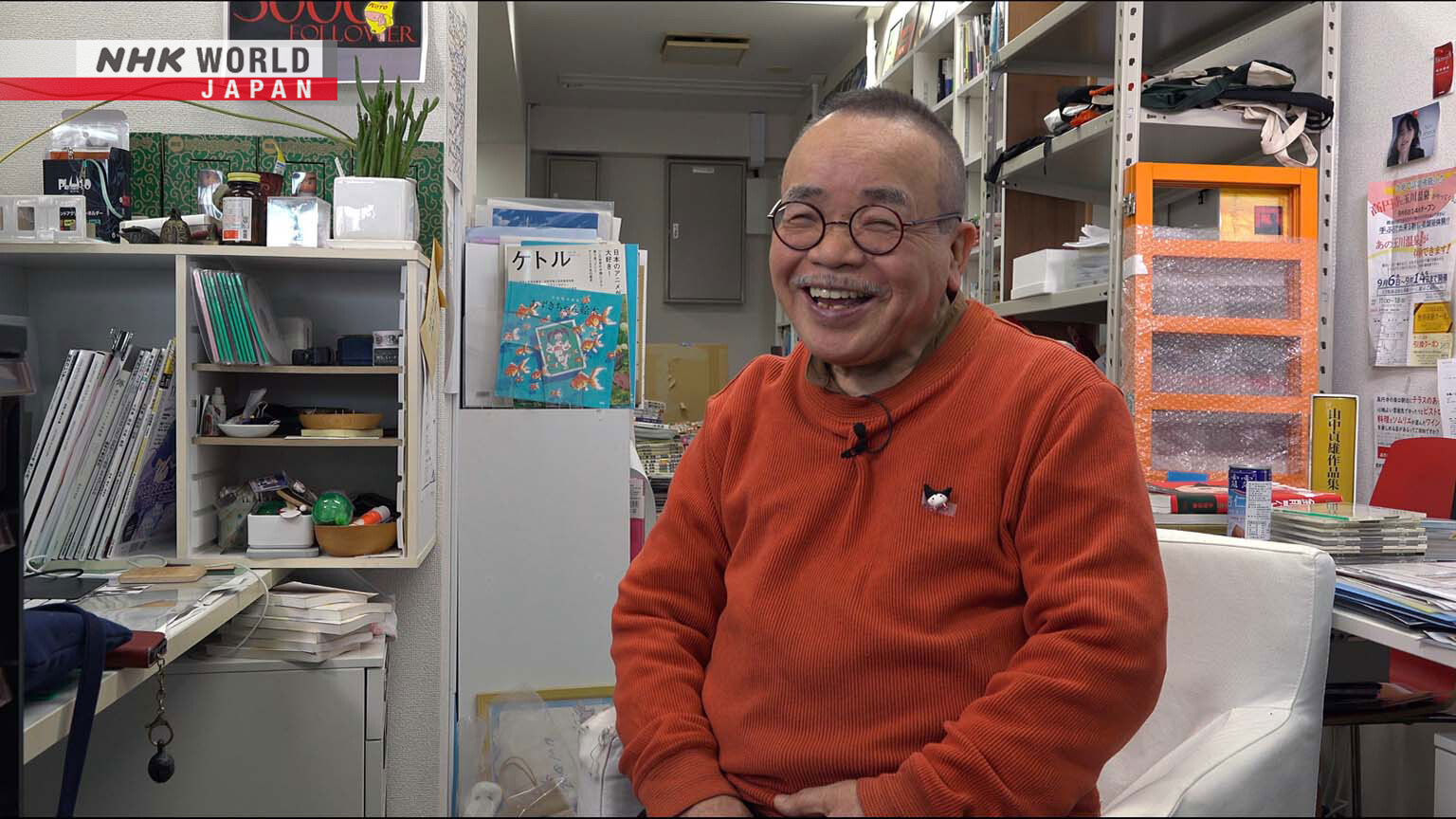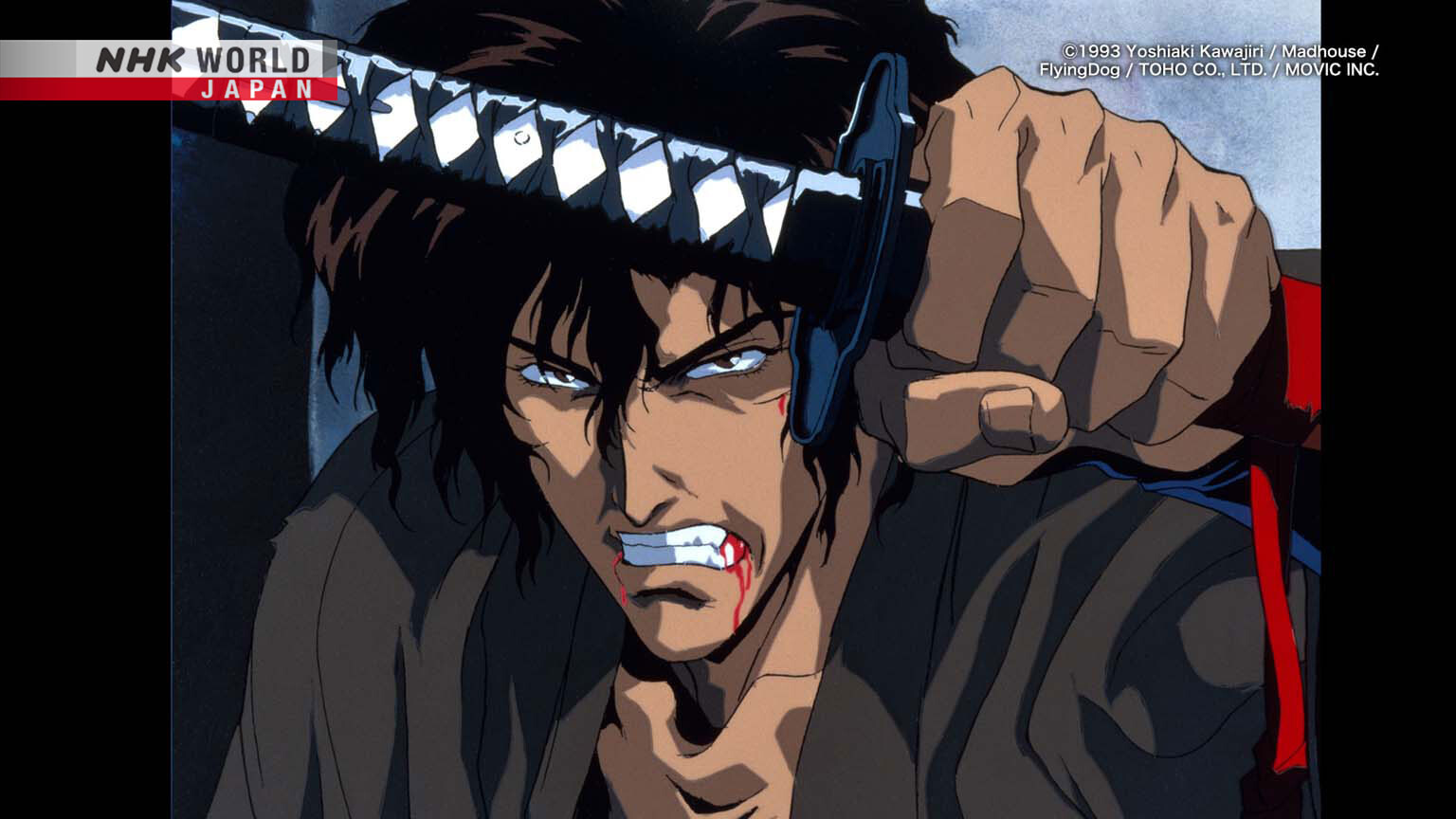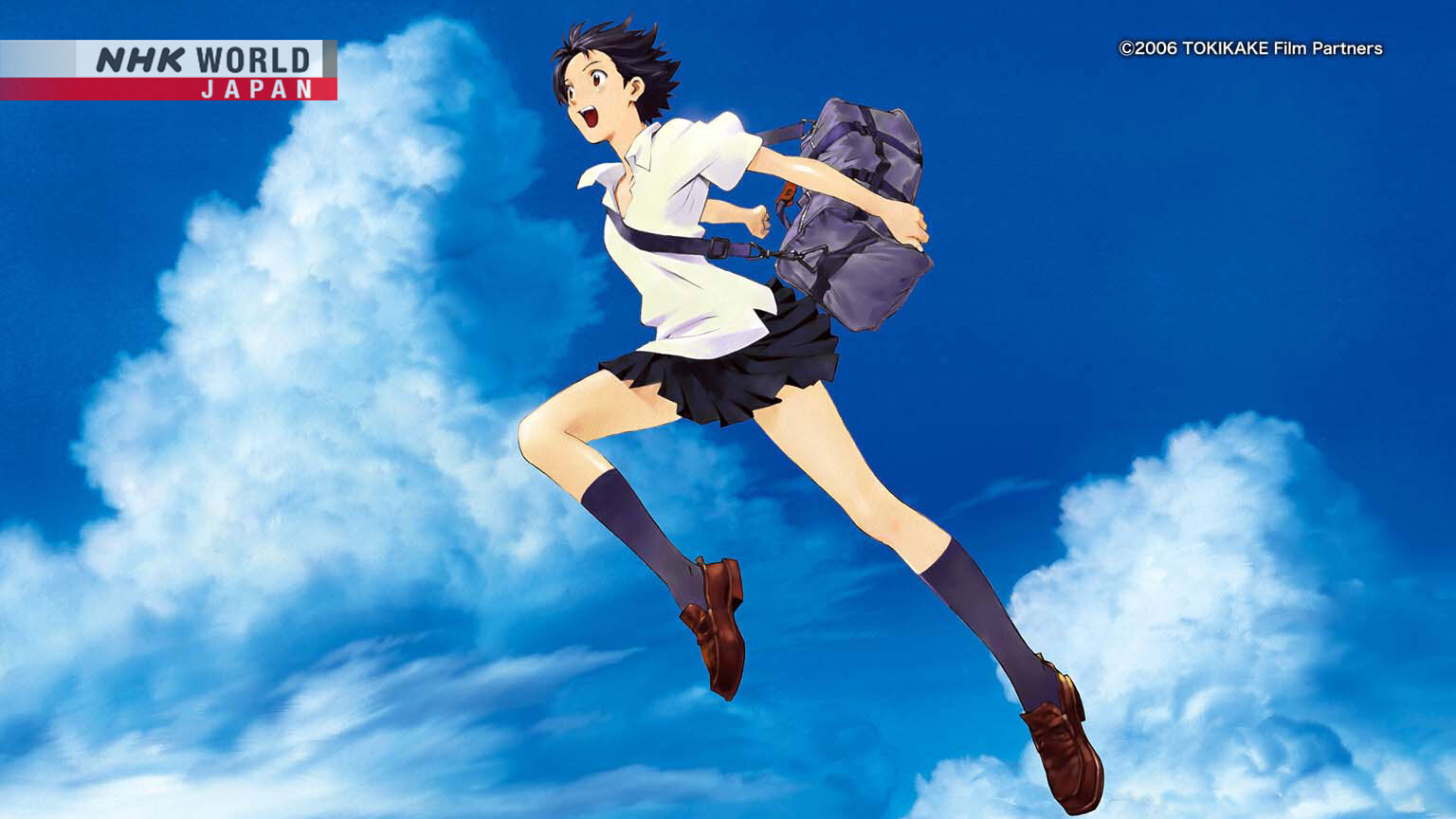Legendary Producer Maruyama Masao
ANIME MANGA EXPLOSION dives into the world of Japanese anime and manga, both of which have gained immense global followings. This time, we get to know anime's pioneering force, Maruyama Masao. His illustrious career spans over 330 titles, including classics like Ninja Scroll, The Girl Who Leapt Through Time and In This Corner Of The World. Plus, discover the untold story behind his latest work 14 years in the making, PLUTO. Watch and find out how the passionate and dedicated 82-year-old veteran continues to push the anime industry forward.




Transcript
ANIME MANGA EXPLOSION.
Pluto!
After its global release in October 2023, the anime PLUTO became a hot topic worldwide.
The profound sci-fi drama tells an anti-war story about the relationship
between humans and robots in about nine hours across eight episodes.
The man behind the series is Maruyama Masao, an 82-year-old producer still active today.
He was involved in the planning process and spent 14 years on PLUTO.
I knew I should make it.
I didn't know if I could, though.
Maruyama has been at the forefront of Japanese anime for decades.
He has worked on over 330 different anime, totaling over 4000 works.
In the 90s, Ninja Scroll started an anime boom in the US.
The wartime human drama In This Corner Of The World took six years to complete due to fundraising difficulties.
Maruyama has always trusted his senses when deciding on anime to produce.
I might die tomorrow, so might as well have fun.
For me, life is all about creation.
Let's find out how Maruyama Masao has continued to push Japanese anime into the future.
This is where we do the drawing.
Studio M2 is in Suginami, Tokyo.
Founded in 2016, it's Maruyama's third studio.
Here, at the age of 82, he continues to produce anime.
This animator has worked with Maruyama for over 35 years.
Maruyama is reckless and takes on projects other studios reject.
We gain experience you can't find anywhere else.
Maruyama's ability to take on challenges took shape 59 years ago.
It was when he met Tezuka Osamu, the God of Manga.
In 1965, at 23, Maruyama joined Tezuka's production company, Mushi Production.
Tezuka would have as many as 11 manga in serialization at once.
Unafraid of too much work, he began to take on anime projects as well.
Maruyama brought out some materials from back then.
These are post recording scripts for the 1966 TV anime Astro Boy.
Everything was handprinted in those days.
My job was to bring scripts to a printer.
I would say, "Please get them ready by tomorrow morning!"
Everything was always last second.
Astro Boy was Japan's first full-scale animated TV series, adapted from Tezuka Osamu's manga.
Tezuka oversaw production of the weekly 30-minute episodes.
Back then, animation studios took their time to produce feature-length works.
Doing a weekly series was considered an impossible challenge.
Tezuka decreased the amount of frames needed with "limited animation."
Although the technique already existed in the US, Tezuka developed it on his own.
Tezuka had to deal with budget, time, and personnel limitations.
He reduced the number of frames and used eyes to add movement.
For most anime, character movement was smooth.
But with fewer images, the movements become jagged.
Character faces stayed the same while only their eyes move.
For Tezuka, smooth animation was not the most important part.
It was the drama of Atom, a robot with emotions playing an active role in a future society.
Tezuka valued story over movement.
When Atom flew,
instead of increasing frame number, Tezuka just moved the camera.
He was bold enough to do things nobody even thought of.
Even if we disagreed, he would reply, "It's fine!"
Astro Boy became a long-running hit that lasted for four years.
Its success pushed more studios to produce TV animation that focused on story,
spurring the expansion of Japanese animation.
Founding Mushi Production was a challenge for Tezuka.
But that challenge raised the quality of Japanese anime.
I want to take on challenges others won't.
In 1972, Maruyama and his friends founded the production company Mad House.
He was 31 years old.
Maruyama produced a series of works he and his colleagues wanted to create.
Aim for the Ace! was based on a manga Maruyama worked on with Dezaki Osamu from Mushi Production.
The sci-fi psycho-suspense Paprika directed by Kon Satoshi went on to win numerous awards worldwide.
For the coming-of-age film The Girl Who Leapt Through Time, Maruyama called on Hosoda Mamoru to direct.
Maruyama went on to produce numerous works in all media and genres, including TV, film, and video packages.
There's no reason we should kill each other.
If you're not going to end this... I will.
At 52, Maruyama produced an original period drama aimed at adults.
It was released on video in North America and sold nearly half a million copies.
I was happy adults enjoyed "Ninja Scroll."
Kawajiri Yoshiaki came up with the story, wrote the script, and directed the film.
The inspiration came from Kawajiri's love of ninja novels.
I wanted to do something with ninjas.
Maruyama said, "If it's interesting, let's do it."
He doesn't reject ideas.
Kawajiri says Maruyama is a producer who doesn't place limits.
Maruyama is very skilled at finding talented creators.
If I never met him,
I wouldn't have been able to create things like "Ninja Scroll."
He has a great eye for talent, but fundraising is a different story.
I made too much takoyaki! Want some?
Yes!
Maruyama, who loves to cook, also shows up in anime.
In SHIROBAKO, a 2014 anime based on the anime industry, one producer was modeled after Maruyama.
He is portrayed as someone who supports his team with food.
In Maruyama's office, there's a crock pot he has used for many years.
I could make dinner for 50.
Anime is created by a team.
Eating from the same pot energizes the team for new challenges.
This is Maruyama's hidden workspace in Tokyo.
Since his office doesn't have a kitchen, he entertains business associates here.
The large, custom-built kitchen space is lined with tableware that Maruyama has bought and collected.
The menu today was stir-fried leeks with pork and mochi, and oyster curry.
All original Maruyama recipes.
One of Maruyama's old work colleagues stopped by.
Animation director Katabuchi Sunao has been friends with Maruyama for nearly 30 years.
I only use natural oysters in the curry.
Delicious.
Maruyama and Katabuchi have worked together on numerous anime productions.
One of the duo's representative works is the 2016 release In This Corner of the World.
It was produced at MAPPA, Maruyama's second studio which he founded at 70.
Based on the manga of the same name, it is set in Hiroshima Prefecture during World War II.
Impressive. How did you get all this ready?
The main character is Suzu, an 18-year-old who left her home to get married.
The moving work portrays Suzu and the people around her trying to live through the hardships of war.
It's been translated into eight languages and released in over 29 countries and regions.
The film also won awards at film festivals across the world.
However, due to financial troubles, the movie's production process did not go very smoothly.
Potential investors asked, "Will this film make people cry?"
I didn't know how to answer.
I said, "You won't cry, but you'll laugh."
It wasn't what they wanted.
Katabuchi continued to research and create storyboards without any funding thanks to Maruyama's support.
Five years after the project began,
Maruyama concluded that it would be difficult to find sponsors, so he called on someone for help.
Producer Maki Taro specializes in fundraising for new anime productions.
Once I got a chance to see his previous works,
I fell in love with Katabuchi right away.
My mission as a producer was to get his productions out into the world.
Maki first proposed they make a pilot film to show potential investors, and that they use crowdfunding to fund it.
They raised 39 million yen, far exceeding their goal of 20 million yen.
This led to multiple investors reaching out.
The studio was on target to raise half the budget.
At this point, Maruyama had to make a decision as a producer.
I told Katabuchi, "We have half the budget."
"You must decide if we should continue or stop production."
He replied, "We'll make it as fast as we can with what we have."
Some of the atomic bomb survivors he interviewed had begun to pass away.
That was his biggest motivation.
Katabuchi proceeded with the production, cutting scenes and storylines to fit the new budget.
Look. We're almost there.
Six years after its conception, the hard work of Katabuchi and the two producers
led to the completion of In This Corner of the World.
Katabuchi still remembers Maruyama's reaction from the preview screening.
He broke down in tears.
I heard someone crying, looked over, and realized it was Maruyama.
That was when I realized how much hard work and sacrifice
it cost Maruyama to finish the project.
Maruyama always keeps one thing in mind as a producer.
I'm their running companion.
I run with directors as if connected by a rope, but I'm always following behind.
I will never get in front of them and say, "Go this way!"
I let them know, "I'll run with you to wherever you want to go."
I do feel that Maruyama lets me lead.
Not just me, but other directors, too.
He may tell us we're veering off course, but he always lets us run in front.
Each director Maruyama works with has a different color.
He's able to adjust to each color and support everyone individually.
It's an incredible skill.
In 2016, 75-year-old Maruyama handed MAPPA over to the next generation.
He and Maki then founded Studio M2, specializing in project planning and development.
Although the idea of project development exists,
the Japanese film industry rarely spends budget and time on it.
When searching for investors,
thorough planning and development can be very effective.
Studio M2 produced the robot anime epic, PLUTO.
Hey, you!
Please don't step into the crime scene without permission.
Inspector, he's the one sent from Europol.
The story takes place in the near future where humans coexist with robots.
The world's most advanced robots get destroyed one after another.
Robot detective Gesicht takes on the case.
It's based on Urasawa Naoki's eight-volume manga of the same name.
Maruyama has adapted three Urasawa Naoki works into anime, earning his trust.
PLUTO is a sci-fi suspense story based on a chapter from a 1960s Tezuka manga.
Maruyama is one of Tezuka's disciples,
so he could imagine how difficult it would be to adapt the eight-volume epic into an anime.
In 2009, 68-year-old Maruyama made a decision.
I knew I had to make the "PLUTO" anime.
I was the only one connected to both Tezuka Osamu and Urasawa Naoki.
From the start, Maruyama was determined to make the anime.
He didn't know if it would be on TV, in theaters, or stream online.
Still, he was going to make it. His passion amazed me.
PLUTO needed a huge budget to ensure its quality would match up to the original manga.
Maruyama and Maki decided to make a pilot film to motivate potential investors.
The first person Maruyama reached out to was Kawajiri Yoshiaki.
He asked Kawajiri to create storyboards for the pilot.
He told me to do whatever I wanted.
Just make it two to three minutes.
As a fan of the original manga, Kawajiri selected the scenes to storyboard.
His focus was on portraying the futuristic world and advanced robots.
I wanted the viewers to know that Gesicht was a highly advanced robot.
I made that physically clear to the audience.
Here is the finished pilot film.
It already contains PLUTO's unique near-future setting and action scenes.
Maki took this pilot film to a global streaming service
and raised enough funding for eight episodes about an hour long each.
Maruyama had no hesitation about which animators to contact.
He's the treasure of the anime industry.
One of his choices was Ohira Shinya, an acclaimed animator known for his powerful artistic style.
This is a scene Ohira animated.
The original manga also included detailed lighting and shadows that changed with character movement.
Ohira put that all into the anime.
The impressive scene is something only Ohira is capable of.
From the very start, one specific scene had Maruyama's attention.
What's wrong, Uran?
The tornado scene.
PLUTO, the robot behind all the destruction, unleashes multiple tornadoes.
Maruyama wanted those tornadoes to express PLUTO's own sadness and grief.
Miyata Takahiro oversaw the scene.
He challenged himself to portray tornadoes in a brand-new way.
He said, "Tornadoes in Hollywood movies may look realistic and powerful."
"But that's boring to me. I want something different."
He wanted imagery that would really surprise the audience.
The tornado animation was based on an illustration by Ohira.
Ohira's art feels alive.
Something besides just clouds and wind flows throughout the image.
Sometimes I can't even tell what's happening.
An art designer put together this concept art based on Ohira's illustrations.
Miyata instructed the CG team to add things like ocean foam and ominous clouds.
All of that resulted in this test video.
This is the final cut, which adds even more atmospheric realism to the tornado scene.
Adding the mysterious parts of the art created atmospheric tension on screen.
Run away! I'm begging you!
One other aspect of the story held Maruyama's focus -
- The portrayal of emotional robots which are not supposed to feel.
The world's most advanced robot, North No.2, is traumatized by his past of destroying countless enemy robots.
Miyata, in charge of special effects for this scene, says Maruyama asked for multiple edits.
He said, "The focus isn't on the robot war or their strength."
"I can't feel North No.2's trauma in your scene."
He then took out the original manga.
"Urasawa was able to depict the trauma so well."
"Why does it keep falling flat in the anime?"
This is the first version of the scene.
The robots are clearly visible on the battlefield.
Maruyama didn't like it.
So, Miyata used a variety of techniques,
like compositing real explosions over the images and covering them with dust
to better express the misery of war.
When he says, "This isn't what I want to express with this work,"
it's time for edits.
And we must keep editing until he's satisfied, no matter what.
Maruyama has a specific goal when adapting manga into anime.
If you're just replicating the manga, there's no need for an anime.
When making an anime adaptation,
we should use techniques and ideas unique to the format.
I create a specific vision and present it to the original author for consent.
Maruyama aims to make full use of the anime format while respecting the original works.
I'm always conscious of whether Urasawa would be upset with my portrayal.
Or if he would accept it as it is.
For "PLUTO," I went to work with the intent that I was Urasawa Naoki himself.
In October 2023, PLUTO was released worldwide, 14 years after Maruyama began planning the project.
Pluto!
June 2022. Maruyama's 81st birthday.
Maruyama made quite the entrance in front of a large audience.
It was Maruyama's living funeral.
He appeared with a white kimono worn by the deceased.
Around 300 people, including many from the anime industry, attended.
Maruyama entertained attendees with his favorite dishes.
Funerals are in general not very fun, are they?
I thought it would be nice to have a funeral full of silly fun.
I've lived a good life. Everything from here is just a bonus.
You won't get angry no matter what I say, right?
Maruyama Masao, anime producer.
The 82-year-old continues to plan projects and take on new challenges.
There are so many anime I want to make.
I might die tomorrow, so might as well have fun.
For me, life is all about creation.